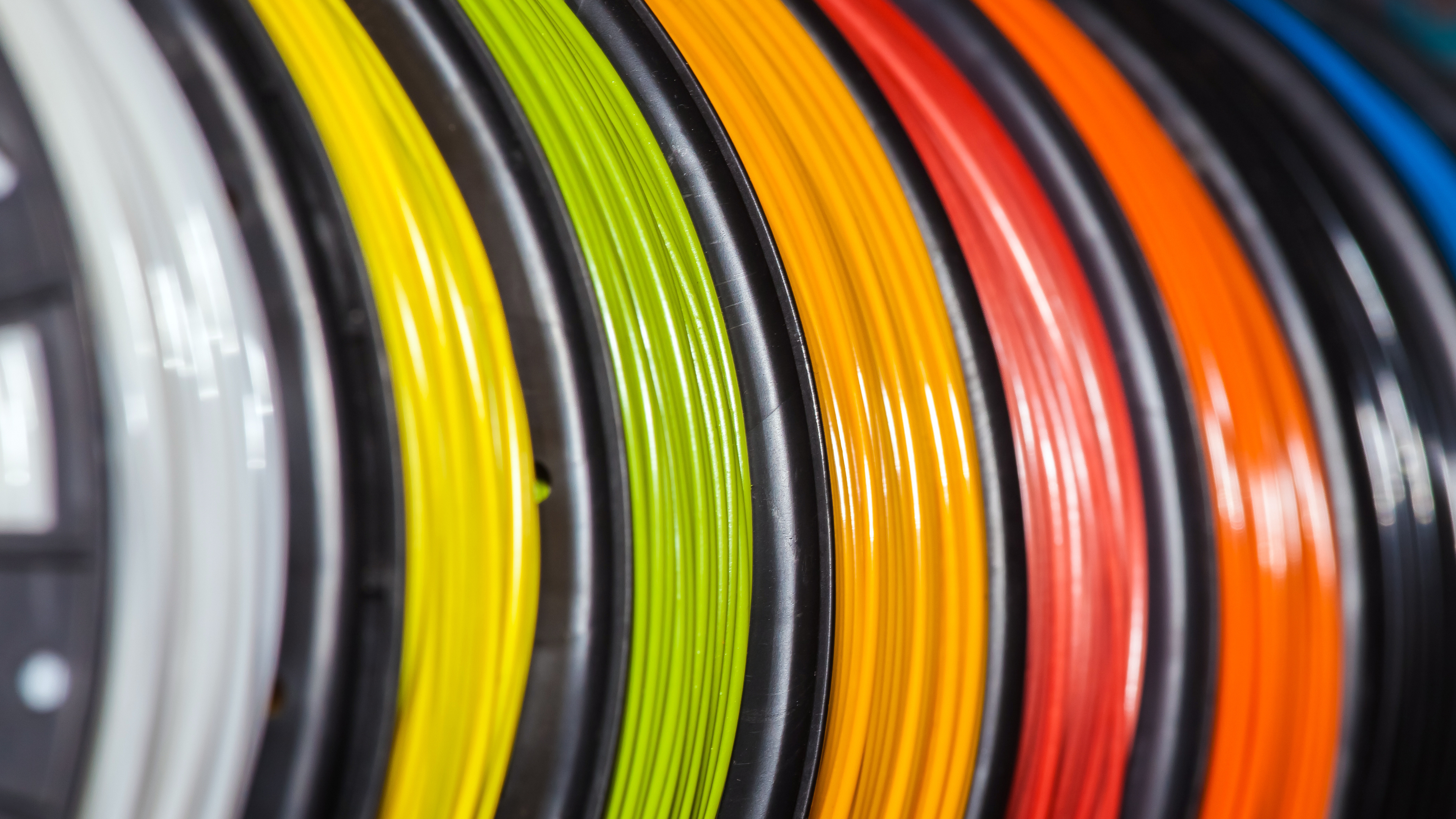- cross-posted to:
- technology@lemmy.world
- cross-posted to:
- technology@lemmy.world
Does anyone here have any tips on low cost ways to vent out these residues from 3D printing?
I keep Ender3 V2 in an enclosure and try to keep it as closed as possible when I take out my prints. Doesn’t hurt to be safe.
I treat it the same way I would laser printer toner, at the very least I don’t want it on my desk.
What they’re saying is basically: We have no clue if 3D-printing can cause cancer, but better be careful.
Yeah, I didn’t know that before.
This study looks at how particles released from 3D printers (specifically using ABS and PLA filaments) can damage cells and potentially lead to cancer. They found changes in gene expression linked to cancer development, but they can’t definitively say 3D printing causes cancer yet.
If you read the full study, though, it’s clear that exposure to these particles affects cells in ways that suggest further research is needed to figure out just how dangerous it is, not if it’s dangerous. The study avoids outright claiming that 3D printing causes cancer because it was mainly designed to assess cellular responses to particulate exposure, not long-term cancer outcomes.
They did see cellular changes linked to cancer pathways, but the study’s design didn’t allow them to draw that direct conclusion. A follow-up study focused on these gene expression changes and long-term effects is likely to show a clearer link between 3D printing exposure and cancer development.
That being said, this isn’t the only study. For instance, particles emitted during 3D printing—especially ultrafine nanoparticles—have been shown to cause cellular damage, oxidative stress, DNA breaks, and inflammation, all of which are early indicators for cancer development. In one study, exposure to ABS fumes led to a 49.5% decline in cell viability, pointing to high toxicity levels.
Other research has suggested that people exposed to 3D printer emissions have a cancer risk 3.44 times higher than those exposed to typical urban pollution. To be blunt, it’s pretty well established that the particles emitted from 3D printing processes are biologically active and harmful. I think that most people engaged with the hobby probably know that intuitively, which seems borne out by the tenor of many of the comments here.
It’s dangerous, and it’s likely shortening your lifespan in the long term. You might not care now, but if you get cancer in a decade or two, I imagine future you will feel differently. “Do you” and all that, but I’m amazed by the amount of people 3D printing without air filtration and vent hoods. The fact that some people do this in the open air in their living spaces is mind boggling to me.
I could tell you that it was a surprise for me but it’s not and I also have a resin printer. Have you smelled that? It’s the smell of cancer building up in your brain! But to be fair, so it’s cola, coffe, fastfood, processed food, cars, every material used for building and keeping your house clean and anything diet… so you know… I was already going to have cancer, at least now I got to play with some toys while dying
Edit: Just wanted to add that my BIL was 43 yo, vegan, fit, would work out and swim 7 days a week, would eat salad from his own backyard, lived in a rural “clean” area and meditate and didn’t like technologies… died from cancer at 43. I’m a fat slob that resin prints for 3 years and already outlived him
Please don’t have resin in your room. It’s nasty, and use gloves to touch (I assume you do), you can get chronic dermatitis from uncured resin
oh no I don’t have it in my room, it’s in the garage, but the smell goes all around the house
I have had dermatitis from resin in my arm (accidental) so yeah i’m aware pretty nasty stuff.
Honestly, I love 3d printing, but I still worry about microplastics in the environment.
Honestly, how much of the 3D printed crap ends up in landfills? It’s the summum of our low quality, fast-creation, use once (twice?) and throw-away culture. This has to be one of the least eco friendly ways of product creation.
There is a different side to this equation too. Locally sourcing production. There is no surplus stock that needs to be thrown unopened. No shipping of some part that solves some particular problem. Replacement parts can be made for things that would otherwise be cheaper to buy new and dump the old one, etc.
Well, it isn’t so much as that. It’s more of a “crap, my bed isn’t leveled”, or “my nozzle got clogged”, or “the filament wasn’t dry enough and broke”, or the filament got tangled, or some other random print fart issue that causes multiple printing issues sometimes. There’s also some situations where the design doesn’t work and you have to go back and make another design change or iteration. All those attempts create waste plastic, and while I recycle my scraps, I’m not sure how many who are going into this hobby do.
It goes beyond this to the things people print. There’s a lot of… low shelf life dudads turned out by a subset of our community. For example, a coworker printed each of the ten of us a 4" tall Groot as a holiday present pre-covid. I bet most of those wound up in the bin. I totally get the hobby of collecting trinkets, but often wonder about the end state - it will all eventually need a new home or will end up in a landfil.
Plastic recycling is a fine idea, but in many cases the material winds up getting shipped overseas and burned. It’s also the least preferred option of reduce, reuse, recycle. It is cool that some filament companies are now accepting scraps, but that’s not very common (yet?). I also wonder how they deal with contamination. Sorting the different plastic types is difficult today from my understanding. That and low resale value is why plastics recycling is struggling.
All that said, I am a massive believer in functional prints. You can breathe new life into existing things and the things you create can be here for a long time.
You can recycle your filaments. This is an incredible way of creation.
You can also just put all of your failed prints in a bag, and say you’re gonna recycle them. But really you keep running out of bags because you’re lazy.
Hmm I didnt know you could recycle filament. That is certainly positive. So that would mean you could take a 3D printed object and melt it down (?) and make something new out of it? Is it infinitely recyclable or does it lose certain properties? And is that easy to do and do people actually do that? (I don’t mean to sound negative, I’m genuinely curious)
This is coming from a big 3d printing nerd, but no, the average person is not able to reuse filament once it’s been used. There are commerically available machines made for turning bits of filament into reusable filament, but the process is incredibly difficult to manage on a hobby scale (you need to make sure your scrap is completely free of any debris or your filament will cause nonstop jams and clogs), the machines are very expensive, and you need a ton of scrap to get a usable amount of filament. I think that there are companies that offer recycling as a service, but again I can’t imagine it being viable on a hobbyist level.
I recognize that plastic waste is obviously a huge issue when it comes to 3d printing, and I agree that some aspects of the hobby can be deemed wasteful. One thing I think that is often overlooked though when it comes to this discussion is the reduction in shipping and handling waste 3d printing provides. Sure, I don’t really need that stupid Baby Yoda print, but if I was already going to buy a little figurine or plushy or whatever, at least the one I printed doesn’t come sealed between two pieces of form fit plastic, held together by plastic coated twist ties, all presented in a plastic-cardboard box with a see-through plastic window that was shipped from mainland China - all of which is getting tossed out. The total waste produced for printing the thing is measured solely in the amount of filament I used and the electricity used to keep the printer running; when you consider that most people print in PLA (which is supposed to be biodegradable) and have electricity subsidized in some shape or form through renewables, the hobby seems much less wasteful than the more popular form of consumerism (buying shit).
You can get a pellet printer as a 2nd printer, either as a modification to an existing printer or as a complete printer, and then you don’t have to worry about most of the difficulties of recycling your waste. Just ensure your keep different types of plastic separate and stored in dry containers just like you would store filament. Then you just need a shredder, which are pretty cheap, and you can create small plastic chunks that will work in the place of pellets. This avoids most of the cost and difficulty associated with recycling, which largely comes from the extrusion process.
If you wind up needing to dry the pellets, its basically the same process as for filament and removing contaminants is less of a concern.
If you also do injection molding, the pellets can also be used for that.
While creating new filament on hobbyist scale is difficult, finding other ways to reuse the plastic at the hobbyist scale isn’t hard. Just requires being willing to do it and a little bit of creativity.
I don’t have a 3D printer but if I did I would try to keep it in a basement or garage, or at least keep a window open





